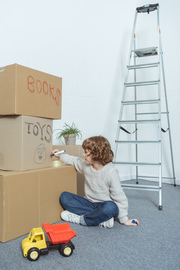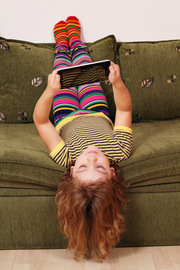Parenting on the Move: Practical Tips for Busy Parents
In a world where life seems to move at the speed of light, being a parent can sometimes feel like running a marathon while juggling flaming torches. With demanding careers, packed schedules, and the constant demands of modern life, finding the time and energy to provide the best care for our children can feel like an overwhelming challenge.
However, with some strategies and mindset shifts, navigating these challenges and providing the best care for your children is possible. For some help, we’ll reveal ingenious hacks to empower you to become the superhero parent you were always meant to be.
So, let’s dive in and discover the practical tips that will revolutionise your life as a busy yet extraordinary parent.
Harnessing the Power of Strollers
Strollers can be a game-changer for busy parents, offering convenience and mobility while ensuring the comfort of your child. They provide a practical solution for parents who are constantly on the move.
Consider the child’s age, lifestyle, and specific needs when choosing a stroller. From lightweight umbrella strollers for quick errands to versatile jogging strollers for active parents, a wide range of options are available.
Consider strollers with storage compartments or attachable organisers to keep essential items easily accessible. Additionally, consider investing in strollers with adjustable handles for ergonomic comfort and features like sunshades, cup holders, and trays for added convenience.
By harnessing the power of strollers, busy parents can navigate their daily routines efficiently while keeping their little ones comfortable and secure.
Utilising Technology to Stay Connected
In today’s digital age, technology can be a valuable ally for busy parents who want to stay connected and organised on the go. Numerous digital resources and apps are specifically designed to assist parents in managing their daily tasks and responsibilities.
Explore the wide range of parenting apps available that offer features such as tracking feeding and sleep schedules, setting reminders for necessary appointments or tasks, and providing access to valuable parenting resources and advice.
Additionally, utilise communication tools like video calls or messaging apps to stay connected with family members, especially if they live far away. These technologies can help bridge the distance and allow relatives or close friends to be part of your child’s life even when you’re on the go.
However, balancing screen time and face-to-face interaction with your child is essential. Remember that technology should complement, not replace, the personal connections and bonding moments with your little one.
Efficient Planning and Organization
Busy parents need adequate planning and organisation strategies to navigate their daily responsibilities while on the move. They must create a flexible schedule and routine that balances work, personal commitments, and quality family time.
Use scheduling apps and set reminders to help you keep track of appointments, deadlines, and important events.
Moreover, busy parents can optimise their time in the kitchen through meal planning and preparation. The key here is to plan meals ahead of time, creating a weekly or monthly menu that accounts for nutritional balance and variety.
Batch cooking and meal prepping can save significant time and effort. Parents can quickly assemble healthy meals on busy days by cooking larger quantities and freezing portions, minimising stress and ensuring their family is well-nourished.
Building a Support Network
Parenting can be challenging, especially for busy parents constantly juggling multiple responsibilities. Building a support network is essential for maintaining your sanity and getting help.
Start by reaching out to family and friends who can offer assistance with childcare or simply lend a listening ear. Consider joining local parenting groups or online communities to connect with other parents facing similar challenges. See if there are drop-in daycare available in your area.
These platforms provide a valuable space for sharing experiences, seeking advice, and finding solidarity. Don’t hesitate to ask for help when needed, and be willing to reciprocate when others in your support network require assistance.
By nurturing a solid support network, you’ll have a reliable source of guidance, understanding, and encouragement throughout your parenting journey.
Self-Care for Busy Parents

Amid the busyness of parenting, busy parents must prioritise self-care. Taking care of one’s physical, mental, and emotional well-being benefits the parent and enhances their ability to care for their children. Here are some self-care tips for busy parents:
- The first step is to recognize the significance of self-care. Self-care isn’t selfish but essential to maintaining a healthy and balanced life.
- Find moments of relaxation and rejuvenation. Busy parents can identify pockets of time throughout the day, such as during a child’s nap or while waiting for an appointment, to engage in activities that promote relaxation. It could include deep breathing exercises, mindfulness meditation, or reading a book.
- Carve out time for your interests and hobbies. Whether exploring a new passion or participating in a fitness class, dedicating time to personal pursuits contributes to happiness and well-being.
Final Thoughts
Parenting on the move requires a willingness to embrace the challenges of a busy lifestyle. Busy parents can navigate demanding schedules while providing their children a loving and nurturing environment by implementing practical tips and customising them to suit individual needs.










